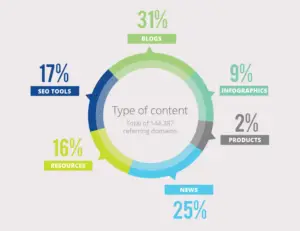In the digital landscape of today, where cyber dangers are hanging over one’s head now and then, security companies face the difficult task of not only saving their digital assets but also being able to be noticed in the marketplace. How do they do it? The answer is CyberySecurity SEO – a very particular kind of Search Engine Optimization for security companies only.
What is Cybersecurity SEO and Why Does It Matter?
Cybersecurity SEO is all about helping your security company’s website appear at the top when potential clients search for solutions online. Imagine a company hit by a ransomware attack or looking to strengthen its defenses — their first step is usually a quick Google search. And in case your venture is out of sight over there, people will never get to know about you.
With the estimation of global cybersecurity expenditure to exceed the mark of $2 trillion by the year 2025, definitely, there has been an explosion in the number of searches for topnotch protection. However, without the perfect SEO strategy, the most modern technologies might still be unreachable by a big audience; thus, they are mostly hidden in search results — away from those who require them the most.
Let me share a quick story: A friend launched a promising endpoint security startup with revolutionary technology. Their product was exceptional, but six months in, they were struggling to attract leads. Why? Their website was practically invisible online. After implementing targeted cybersecurity SEO techniques, their organic traffic increased by 326% in just three months, bringing qualified leads directly to their inbox. That’s the power of specialized SEO for cybersecurity firms.
The Unique Challenges of Cybersecurity SEO
Security companies face distinct challenges when it comes to SEO:
- Technical complexity: Explaining sophisticated security concepts in SEO-friendly language without sacrificing accuracy
- Trust factors: Security businesses need to demonstrate credibility more than most other industries
- Competitive landscape: These days, the cybersecurity world is overflowing with companies — from long-established giants to fresh startups — all fighting for attention in the same crowded space.
- Rapidly evolving field: What makes it even tougher is how fast everything changes. New threats, fresh jargon, shifting priorities — it’s a race to keep up. Your content has to evolve just as quickly to stay useful.
Now, let’s jump into the real stuff — the practical cybersecurity SEO strategies that can help your business rise in the rankings and actually reach the people who need your services.
6 Essential Cybersecurity SEO Strategies
1. Strategic Keyword Research for Security Businesses
The foundation of effective cybersecurity SEO begins with understanding what your potential clients are searching for. Let’s break down the keyword research process:
Start with Core Security Concepts
Begin by brainstorming topics central to your cybersecurity SEO offerings:
- Phishing prevention
- Ransomware protection
- Network security
- Endpoint protection
- Vulnerability assessment
- Threat intelligence
- Security compliance (GDPR, HIPAA, CMMC, etc.)
Use Google’s Free Tools for Keyword Inspiration
Google provides several free ways to discover relevant keywords:
- Google Autocomplete: Type a partial security term like “ransomware p…” and see what suggestions appear
- People Also Ask: Review the questions that appear in search results for your main terms.
- Related Searches: Sometimes, when you scroll to the bottom of a Google results page, you’ll notice a list of other search terms. These suggestions are gold — they show what people are also looking for around your main topic.
Let’s say you type in “endpoint security. ” You will probably find similar concept suggestions such as “EDR solutions,” “endpoint detection and response,” or “best endpoint protection platforms.” Those provided by other users can thus be a good source of additional phrases for your keyword list in a non-SEO way.
Employ Keyword Research Tools
For more comprehensive research, tools like Semrush or Ahrefs can help identify:
- Search volume: How many people search for this term monthly
- Keyword difficulty: How challenging will it be to rank for this term
- Related keywords: Other terms you might want to target
Focus on Intent-Based Keywords
Consider the different intent stages of your security customers:
Informational Intent:
- “What is zero trust security?”
- “How to prevent phishing attacks.”
- “Types of cybersecurity threats”
Investigational Intent:
- “Best endpoint security solutions”
- “Top SIEM tools comparison”
- “Security compliance checklist”
Commercial Intent:
- “Cybersecurity services for healthcare”
- “Enterprise ransomware protection cost”
- “Managed security service providers”
Transactional Intent:
- “Buy endpoint security software.”
- “Security audit services pricing”
- A search query like “hire penetration testing company” is an obvious indication of the highest intent—the person who entered the query is not just browsing but is a potential customer looking for the service they need right now.
Adjust your writings so they match the keywords indicating the different buying intentions of people. You will be in a position to easily reach potential customers whenever that perfect moment is no matter whether they are just getting to know or they are willing to settle for a purchase.
2. Creating Expert, Authoritative Cybersecurity Content
In the cybersecurity SEO industry, it is not enough to simply claim to be an expert in the field; it is important to show your genuine expertise. Google has given high priority to the E-A-T criteria (Expertise-Authoritativeness-Trustworthiness) as a major determinant for a website to rank well, particularly in the cybersecurity niche.
Content Types That Perform Well
Educational Blog Posts: Create in-depth articles explaining security concepts, threats, and best practices. For example:
- “Understanding Supply Chain Attacks: The Lesser-Known Risk to Your Business”
- “Zero Trust Architecture: A Guide to Applying It for Startup Companies in the Middle-Size Range”
Technical Whitepapers: Develop comprehensive technical documents demonstrating your deep security expertise:
- “Ransomware 2020-2025: Attack Patterns Evolution Analysis”
- “CMMC 2.0 Compliance: Technical Requirements Deep Dive” </
Case Studies Showcase real-world examples of how you’ve solved security challenges:
- “How We Reduced Phishing Success Rate by 94% at XYZ Corporation”
- “Implementing Zero Trust: A Regional Bank’s Journey”
Thought Leadership Articles: Position your security experts as industry thought leaders:
- “The Future of Threat Intelligence: AI-Driven Predictions”
- “Beyond Passwords: The Authentication Revolution”
How-to guides and Tutorials are real-life examples and instructions:
- “How to Conduct an Effective Security Awareness Training Program”
- “The Sequence of Events on Enabling MFA Throughout Your Organisation”
Content Creation Best Practices
When creating cybersecurity content, follow these guidelines:
- Lead with expertise: Have your security experts contribute to or review content.
- Stay current: Update content regularly as threats and solutions evolve.
- Use data: Include relevant statistics and research findings.
- Simplify complexity: Break down technical stuff so the audience is crystal clear about the concepts.
- Include visuals: Go for diagrams, infographics, and charts to portray even the trickiest security concepts so that people can understand
- Optimise readability: Use headers, bullet points, and short paragraphs to make the text easy to skim.
3. Technical SEO for Cybersecurity Websites
As a cybersecurity SEO company, your website must exemplify website security best practices while also being optimised for search engines.
Website Security as an SEO Factor
Google prioritises secure websites in rankings. Implement these security measures that also boost SEO:
- HTTPS implementation: Ensure your entire site uses HTTPS (this has been a ranking factor since 2014)
- Security certificates are updated: Ensure that the SSL certificates are up to date and configured correctly.
- Secure hosting: Use reputable, security-focused hosting providers
- Regular security audits: Conduct ongoing vulnerability assessments of your website
Core Web Vitals Optimization
Google’s Core Web Vitals are user experience metrics that have a significant impact on which the website is ranked:
- Loading performance (LCP): This is the first contentful paint which you have to optimize like image sizes or you can leverage browser caching to load the content quickly and use code that is of minimal size.
- Interactivity (FID): Reduce JavaScript execution time to make your site responsive to user interactions
- Visual stability (CLS): Ensure elements don’t shift unexpectedly as the page loads
Mobile Optimization
Your cybersecurity SEO webpage will need to be entirely mobile responsive, as mobile devices account for over 55% of web traffic.
- Make sure your website has a responsive design, which automatically adjusts to fit any screen size.
- Ensure that touch targets, such as buttons and hyperlinks, are sized appropriately for mobile users.
- Test your site on various devices and browsers.
Technical SEO Checklist
Additional technical optimization factors include:
- Build the XML sitemap and add it to Google Console.
- Implement schema markup for cybersecurity services.
- Optimize URL structures for clarity and relevance.
- Fix broken links and redirect issues.
- Ensure proper canonicalization to prevent duplicate content.
- Optimize site architecture for logical user navigation.
4. Building Authority Through Strategic Link Building
For cybersecurity companies, backlinks serve dual purposes: they boost search rankings and establish credibility in a field where trust is paramount.
Quality Over Quantity
Focus on earning links from sites relevant to the security industry:
- Industry publications (Dark Reading, Infosecurity Magazine, ThreatPost)
- Security associations and organisations
- Technology news outlets
- Business publications covering security topics
- Industry conferences and events
Link-Building Strategies for Security Firms
Create linkable security research. Conduct original research or security analysis that others will want to reference:
- Industry surveys on security practices
- Threat analysis reports
- Vulnerability discoveries (responsibly disclosed)
Leverage security experts for guest posting. Have your security professionals contribute expert articles to respected publications.
Develop security tools or resources. Create free tools that solve common security problems:
- Password strength checkers
- Security configuration analyzers, Compliance checklists
Press release distribution: Distribute newsworthy security announcements through cybersecurity-focused PR distribution services.
Security webinars and events: Host educational webinars and participate in industry events, generating links from event listings and recaps.
5. Local SEO for Cybersecurity Businesses
If your security firm serves specific geographic areas, local Cybersecurity SEO is crucial for connecting with nearby clients.
Google Business Profile Optimization
Your Google Business Profile is key to gaining attention locally:
Claim and verify your business listing
Complete all profile sections:
- Accurate NAP (Name, Address, Phone) information
- Comprehensive business description with relevant security services
- Service areas are clearly defined
- High-quality photos of your office and team
Select appropriate business categories (Computer Security Services, IT Services, etc.)
Regularly post updates about security topics, events, or services
Local Citation Building
Ensure consistent business information across local directories:
- Industry-specific directories
- Chamber of Commerce listings
- Better Business Bureau
- General directories like Yelp and Yellow Pages
Review Management
Actively manage and respond to reviews, as they impact both rankings and client trust:
- Encourage satisfied clients to leave reviews
- Address reviews in a professional manner, no matter whether they are negative or positive
- Address any security concerns mentioned in reviews thoroughly
Location-Specific Content
Create content tailored to local security concerns:
- “Cybersecurity Challenges for [City/Region] Businesses”
- “Local Compliance Requirements for [Industry] in [State]”
- “[City]-Based Security Solutions for Small Businesses”
6. Leveraging PR for Cybersecurity SEO
Press releases can significantly boost your cybersecurity SEO efforts when optimized correctly.
SEO-Optimized Press Release Strategy
- Make sure to include the essential keywords in your press release title and text
- Plan your press release with the help of the top-down approach (the very first thing is the most important)
- Optimize the title with your target keyword near the beginning
- Include your keyword in the first paragraph (which often becomes the meta description)
- Use appropriate subheadings with relevant keywords
- Include 1-2 optimized images with descriptive alt text
Press Release Topics That Generate Interest
- New security solution launches
- Research findings or threat discoveries
- Executive appointments
- Industry partnerships
- Funding announcements
- Major client wins (with permission)
- Security awards or recognition
Distribution Through Cybersecurity Channels
Use cybersecurity-focused press release distribution services to reach relevant publications. This can help your releases appear on high-authority security sites like:
- CIO.com
- CSO Online
- DevOps.com
- SecurityBoulevard.com
- CyberNews.com
Measuring Your Cybersecurity SEO Success
To ensure your Cybersecurity SEO efforts are yielding results, track these key performance indicators:
Key SEO Metrics for Security Companies
- Organic traffic growth: Monitor increases in non-paid search traffic
- Keyword rankings: Track position improvements for target security terms
- Backlink quality and quantity: Measure new links from authoritative sources
- Conversion rates: Track how often visitors become leads or customers
- Engagement metrics: Review the time on site, the number of pages per session, and the bounce rate
- Local visibility: Monitor Google Business Profile views and actions
SEO Analysis Tools
Several tools can help track these metrics:
- Google Analytics
- Google Search Console
- Semrush
- Ahrefs
- Moz
The Cost of Cybersecurity SEO
Spending on SEO in cybersecurity changes according to your way of doing it:
- DIY approach: Free to $500/Month (tools and occasional consultations)
- SEO services I do Monthly: $3,000 to $10,000 per Month of complete management
- Engaging in Local Search Engine Optimization: $500 – $1,000 per Month
- A one-time project: $5,000 to $30,000 based on the scope
One point to remember about Cybersecurity SEO is that you’re doing consistent work behind it, and it’s not something you can simply set aside without thinking about it. You may opt for a brief paid advertisement to show up first in the search results, but SEO does the same function without charging you money. Everything happens without my interference. SEO may take time to deliver valuable and consistent traffic, even after ad spend has ended.
Real-World Success: A Cybersecurity SEO Case Study
Here is one more brief story to highlight the effect of good cybersecurity SEO.
A medium-sized security consultancy found it hard to keep pace with the bigger players in the industry. Despite offering excellent services, they remained virtually invisible online. Their website traffic was minimal, and most of their business came from referrals.
After implementing a comprehensive cybersecurity SEO strategy:
- They identified and targeted underserved security niches where competition was less fierce
- Created in-depth content addressing specific pain points in those niches
- Optimized their website’s technical performance and security
- Established networks with relevant publications in the sector with a focus on authoring articles
The results? Within six months:
- Organic traffic increased by 164%
- Keyword ratings in the top 3 places increased by 326%
- Lead generation from organic search rose by 78%
- Cost per acquisition significantly dropped as opposed to their previous PPC campaigns
The key insight: They didn’t just implement generic cybersecurity SEO tactics – they tailored their approach to the cybersecurity industry and their unique strengths within it.
Choosing the Right Cybersecurity SEO Partner
If you want to collaborate with an SEO company, find these specifics:
- Experience in the security industry: They should understand security concepts and terminology
- Proven results: Ask for case studies specific to security or technical B2B clients
- Technical expertise: They should demonstrate strong technical cybersecurity SEO knowledge
- Content capabilities: Ability to create or guide expert-level security content
- Transparent reporting: Clear communication about strategies and results
- White-hat techniques: Avoidance of risky tactics that could penalize your site
Conclusion: Your Cybersecurity SEO Roadmap
Implementing effective SEO for your cybersecurity business isn’t just about improving rankings – it’s about connecting your valuable security expertise with the organisations that need it most.
By the use of several ways that have been mentioned in this manual, you can:
- Increase your visibility in search results
- Establish your company as a trusted security authority
- Generate qualified leads organically
- Build sustainable traffic that grows over time
- Reduce dependence on costly paid advertising
Be aware that Cybersecurity SEO is a process that occurs over time, not just a single event. The process includes content production, and the terminologies would be fixed up if you have a tight relationship with other websites. To meet the basics of the topic, check the results of what you are doing, and always be open to adjusting your approach depending on the result it can be helpful to be.
The cybersecurity SEO landscape is competitive, but with strategic SEO implementation, your security solutions can rise above the noise and reach the businesses that need your protection in our increasingly dangerous digital world.
Ready to elevate your cybersecurity company’s online presence? Start implementing these SEO strategies today and watch your digital visibility – and your business – grow.

Ahsan Ali is a technology blogger and the founder of Techzivo.com, a platform dedicated to delivering insightful and practical content for tech enthusiasts.He currently focuses on creating in-depth articles around cybersecurity, aiming to help readers stay safe and informed in the digital world. With a passion for emerging technologies, Ahsan plans to expand Techzivo’s coverage into other technology micro-niches such as AI, cloud computing, and digital privacy, offering valuable insights for a broader tech-savvy audience.





